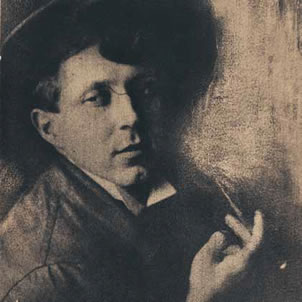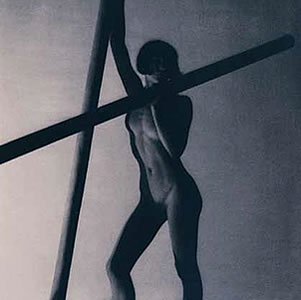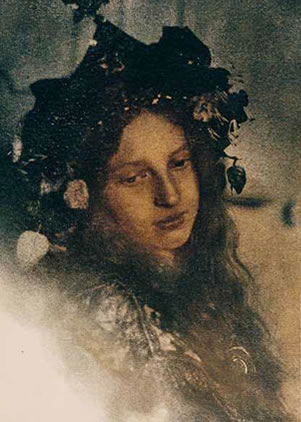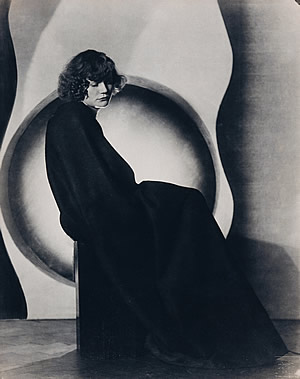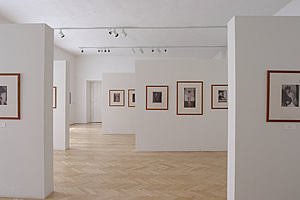Fotograf František Drtikol
(1883 Příbram - 1961 Praha)
otevírací doba denně kromě pondělí od 9 do 17 hodin
František Drtikol (1883 Příbram - 1961 Praha) byl první český fotograf, který získal již za svého života světové uznání. Jeho dílu byla věnována již řada výstav i odborných publikací, ale dosud chyběla stálá expozice autorových prací. Drtikolovo rodné město Příbram připravilo ve spolupráci s Uměleckoprůmyslovým museem v Praze výběr z autorova fotografického díla let 1901-1935 ve formě výstavních faksimilií.
Výstava připomíná období secesního piktorialismu, spojené s autorovým školením v Mnichově, prvním ateliérem v Příbrami a počátkem pražské praxe. Ze dvacátých let jsou vystaveny fotografie vzniklé v duchu art deco, ovlivněné i podněty avantgardy. Závěr expozice tvoří práce spjaté s autorovou orientací na duchovní nauky východu.
Návštěvníci galerie mohou shlédnout slavné psychologické portréty, jedinečné akty, četné krajinné kompozice i další fotografické žánry a odnést si ucelenou představu o rozsahu i hloubce uměleckého odkazu Františka Drtikola.
Na výstavě je promítán film o životě a díle F. Drtikola
„Při mé tvorbě opírám se o biblický výrok genese: Bůh stvořil člověka k obrazu svému. Že ho nestvořil oblečeného, je jisté, neb člověk se rodí nahý. A proto dívám se na nahotu jako dílo Boží, jako na krásu samu, jako na nejmorálnější, nejsamozřejmější věc. A tvrdím, že by bylo lidstvo přirozenější, upřímnější a krásnější, kdyby více chodilo nahé. V nahotě přestávají rozdíly společenské a zůstává prostě nahá krása člověka. Třemi věcmi nechávám se inspirovat při práci: dekorativností, pohybem, klidem a výrazem jednotlivých linií. Podle toho pak používám pozadí, praktikable: jednoduché předměty jako kruhy, vlnovky, sloupy apod. A nechám pak působit krásu linie samu, bez všelikých okras, potlačením všeho druhořadého. Nebo znázorním pohyb, který zesílím světlem a eventuelním náznakem jednoduché vlnovky, kruhem, plochou, nebo jen stínem vrženým na pozadí, nebo použiji těla jako dekorativního předmětu, který umístím v různém prostředí a světle. Tak vytvářím všechny svoje obrazy.“
František Drtikol
Umění fotografické
Je fotograf umělec?
Ano, vyspěje-li v něj vlastní prací a vlastním životem. Výuční list nebo vysvědčení je jen jakousi zárukou jeho vyspělosti řemeslné, jež je podmínkou činnosti umělecké. On a režisér jsou rodní bratři; oba mají stejné možnosti umělecké činnosti. Fotograf je komponentem světla, hledá melodie, jež by potěšily duši, jež by daly výraz našemu cítění. Nikdy dobrá fotografie nevznikla tím, že si před aparát stoupl dobrý model. Obraz musí v hlavě fotografově býti hotov dávno předtím, než se odrazil v hledáčku. (Ač je pravda, že někdy myšlenka dozrává urychleně pod dotekem skutečnosti.) Fotografická čočka je nástrojem, jenž se mnohem dokonaleji podrobí tvůrčí myšlence a jenž, pracuje nad pomyšlení rychle, jí zachovává mnohem spíše vůni a půvab tvůrčího okamžiku nežli štětec nebo rydlo - pomalé nástroje výtvarníků. Fotograf opravuje, schvaluje, zavrhuje - v hlavě. Pro dozrálou myšlenku vyčkává - tu s větší, tu s menší pasivností - na vhodný okamžik a pak se ve vteřině myšlenka stává dílem. Srovnávám náčrtky výtvarníků s jejich hotovými pracemi: často mi skica říká mnohem více, dá mi větší umělecký požitek: při skice byl zaměstnán umělec, prováděti ji však musil trpělivý řemeslník, neboť řemeslu se žádný umělec nevyhne. A naše řemeslo dalo našemu umění do služby ideální nástroj. Každý umělec by měl vlastně znát všechny techniky, aby svoje umělecké myšlenky mohl všestranně vyjádřit. Hlavně tedy fotografii. Jsou také ovšem fotografické práce čistě řemeslné, ty však se nerodí ani ze srdce, ani z hlavy, těch nedělá umělec, ty provádí jen a jen čočka aparátu“.
František Drtikol
František Drtikol was the first Czech photographer who became well know all over the world during his lifetime. His work has been presented in many exhibitions and publications, but there has not been a permanent exhibition of his pictures yet. Příbram, Drtikol‘s birthplace, and the museum of applied arts in Prague have prepared an assortment of his photographs from the period of 1901 to 1935, in the form of facsimiles.
It recalls the period of fin-de-siecle pictorialism when he studied in Munich, opened his first studio in Příbram and started to work in Prague. The photographs from the 1920s are in the art deco style and they are influenced by avant-garde. The last part of the exhibition consists of that of Drtikol‘s work which is connected with his interest in Eastern philosophies.
Visitors to the exhibition can see famous psychological portraits, excellent nudes, lots of landscapes and other photographic genres. They can imagine the extent and the depth of Drtikol‘s artistic bequest.
”In my work I rely on the assertion from the Book of Genesis that God created man in his own image. It‘s clear that he didn‘t create him clothed, for man is born naked. This is why I look on nakedness as the work of God, as beauty itself, as the most moral, obvious thing. I contend that mankind would be more natural, sincere and beautiful if it went around naked more often. With nakedness, social distinctions disappear and the naked beauty of man remains. In my work I am inspired by three things: decorativeness, motion and the stillness and expression of individual lines. I then use the background and props - simple objects such as circles, wavy lines and columns - accordingly.
I let the beauty of the line itself make an impact, without embellishment, by suppressing everything that is secon- dary. Or I illustrate a motion and intensify it with light and perhaps a suggestion of a simple wavy line, circle, sur- face or just a shadow cast onto a backdrop. Or else I use the body as a decorative object, positioning it in various settings and lights. This is how I create all my pictures.”
The art of photography
Is the photographer an artist?
He is if he develops into one through his work and life. A certificate of apprenticeship is just a kind of guarantee that he has reached a certain level of craftsmanship, which is a requirement for artistic activity. The photographer and film director are blood brothers; they have the same scope of artistic activity. The photographer is a composer of light. He looks for melodies to please the soul and give expression to our feelings. A good photograph was never made by simply getting a good model to step in front of the camera.
The picture must be ready in the photographer‘s mind a long time before it is reflected in the viewfinder. (Although it‘s true that an idea sometimes comes to rapid fruition under the impact of reality). In comparison with the paintbrush or engraving tool - the slow instruments of artists - the camera lens conforms much more closely to the creative idea. Working unbelievably quickly, it preserves far more of the scent and charm of the creative moment.
The photographer adjusts, approves and rejects – in his mind. For the mature idea, he waits - now with more, then less, passivity - for a suitable moment and eventually the idea becomes an instant work.
When I compare an artist‘s sketch with the finished work, the sketch often conveys much more to me, giving me greater artistic pleasure. An artist is employed for a sketch but a patient craftsman must be there to execute it; no artist can get by without craftsmanship. Our craft has provided our art with an ideal instrument. Every artist should be familiar with all the techniques in order to articulate his artistic ideas as comprehensively as possible. Especially in photography. Of course, some photographs are pure craft, but these do not come from the heart or the mind and are not made by artists - they are executed by the lens and nothing but the lens.
František Drtikol

